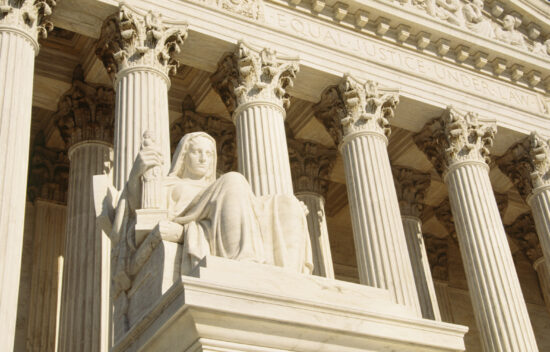

BRI Resources for Texas Educators
Educational resources distributed by the Bill of Rights Institute (BRI) are standards-informed, but as a national organization, were not specifically designed to meet any individual state standards. The lessons below are suggested resources that should be used as a starting point for educators to use to meet the Texas TEKS.
Primary Sources
High School US Government TEKS
Celebrate Freedom Week | High School Resources
G.1E
Analyze debates and compromises that impacted the creation of the founding documents.
G.4B
Compare the role of government in the U.S. free enterprise system and other economic systems.
G.6C
Analyze how the Federalist Papers such as Number 10 and Number 51 explain the principles of the American constitutional system of government.
G.6D
Evaluate constitutional provisions for limiting the role of government, including republicanism, checks and balances, federalism, separation of powers, popular sovereignty, and individual rights.
G.7E
Explain how provisions of the U.S. Constitution provide for checks and balances among the three branches of government.
G.8D
Explain how the U.S. Constitution limits the power of national and state governments.
G.12E
Analyze U.S. Supreme Court interpretations of rights guaranteed by the U.S. Constitution in selected cases, including Engel v. Vitale, Schenck v. United States, Texas v. Johnson, Miranda v. Arizona, Gideon v. Wainwright, Mapp v. Ohio, and Roe v. Wade.
Grades 3-5 TEKS
Celebrate Freedom Week | Elementary Resources
Featured Lessons
Grade 8: US History until 1877 TEKS
Celebrate Freedom Week | Middle School Resources
8.3B
Analyze the importance of the Mayflower Compact, the Fundamental Orders of Connecticut, and the Virginia House of Burgesses to the growth of representative government.
8.4A
Analyze causes of the American Revolution, including the Proclamation of 1763, the Intolerable Acts, the Stamp Act, mercantilism, lack of representation in Parliament, and British economic policies following the French and Indian War.
8.4D
Analyze the issues of the Constitutional Convention of 1787, including the Great Compromise and the Three-Fifths Compromise.
8.6B
Analyze the westward growth of the nation, including the Louisiana Purchase and Manifest Destiny.
8.8D
Analyze Abraham Lincoln's ideas about liberty, equality, union, and government as contained in his first and second inaugural addresses and the Gettysburg Address and contrast them with the ideas contained in Jefferson Davis's inaugural address.
8.15A
Identify the influence of ideas from historic documents, including the Magna Carta, the English Bill of Rights, the Mayflower Compact, and the Federalist Papers, on the U.S. system of government.
8.15C
Identify colonial grievances listed in the Declaration of Independence and explain how those grievances were addressed in the U.S. Constitution and the Bill of Rights.
8.15E
Explain the role of significant individuals such as Thomas Hooker, Charles de Montesquieu, and John Locke in the development of self-government in colonial America.
</p>
8.17A
Analyze the arguments of the Federalists and Anti-Federalists, including those of Alexander Hamilton, Patrick Henry, James Madison, and George Mason, and explain how their debates exemplify civil discourse.
8.20A
Evaluate the contributions of the Founding Fathers as models of civic virtue.
8.22A
Analyze the leadership qualities of elected and appointed leaders of the United States such as George Washington, John Marshall, and Abraham Lincoln.
High School US History Since 1877 TEKS
US.1A
Analyze and evaluate the text, intent, meaning, and importance of the Declaration of Independence and the U.S. Constitution, including the Bill of Rights.
US.5B
Evaluate the impact of muckrakers and reform leaders such as Upton Sinclair, Susan B. Anthony, Jane Addams, Ida B. Wells, and W. E. B. DuBois on American society.
US.7C
Analyze major issues of World War II, including the Holocaust, the internment of Japanese Americans as a result of Executive Order 9066, and the development of atomic weapons.
US.9A
Trace the historical development of the civil rights movement from the late 1800s through the 21st century, including the 13th, 14th, 15th, and 19th amendments.
US.9F
Discuss the impact of the writings of Martin Luther King Jr., including his "I Have a Dream" speech and "Letter from Birmingham Jail" on the civil rights movement.
US.11A
Describe U.S. involvement in world affairs, including the end of the Cold War, the Persian Gulf War, the events surrounding September 11, 2001, and the global War on Terror.
US.20A
Analyze the effects of landmark U.S. Supreme Court decisions, including Plessy v. Ferguson, Brown v. Board of Education, Hernandez v. Texas, Tinker v. Des Moines, and Wisconsin v. Yoder.


































































